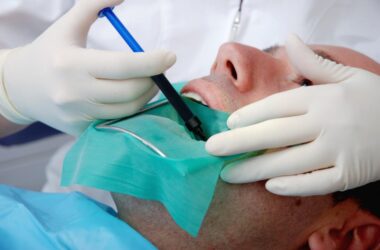Invisalign has become one of the most popular orthodontic treatments for both teens and adults. Its transparent, removable aligners offer a discreet and comfortable alternative to metal braces. However, one common question patients have is: What determines Invisalign pricing? The truth is, Invisalign costs vary widely depending on individual needs, treatment duration, and clinical factors.
Here’s a detailed breakdown of the major elements that influence the final price of Invisalign treatment.
1. The Complexity of Your Case
The biggest factor affecting Invisalign cost is the complexity of tooth movement required.
- Mild misalignment or spacing: Simple cases may require fewer aligners and shorter treatment time.
- Moderate crowding or bite issues: These cases often need more aligners, refinements, and orthodontic visits.
- Severe alignment or jaw correction: Complex treatments can involve additional attachments or longer durations, increasing the overall cost.
In short, the more adjustments your smile needs, the more expensive the treatment becomes.
2. Length of Treatment
Most Invisalign treatments last between 6 and 24 months, depending on how much correction is needed. Longer treatments mean more sets of aligners, more appointments, and higher material and labor costs.
Your orthodontist determines the number of aligners during your initial consultation based on your digital scan and customized treatment plan.
3. Type of Invisalign Plan
Invisalign offers multiple treatment options to fit different cases and budgets:
- Invisalign Express: Designed for very mild corrections and typically includes 5–10 aligners.
- Invisalign Lite: For moderate cases requiring limited movement, usually 10–20 aligners.
- Invisalign Full: The standard treatment for complex adjustments involving 20+ aligners.
- Invisalign Teen: Includes features like eruption tabs and wear indicators for growing teens.
The more aligners and advanced features your plan requires, the higher your cost will be.
4. Geographic Location and Clinic Fees
Where you live plays a role in pricing. Invisalign tends to be more expensive in major cities due to higher overhead and operational costs. Orthodontists in smaller towns or suburbs may offer lower rates while maintaining similar quality.
Additionally, each dental clinic sets its own professional fees based on experience, certification level, and service quality.
5. Orthodontist’s Experience and Certification Level
Orthodontists are classified into tiers by Invisalign (Bronze, Silver, Gold, Platinum, Diamond) based on how many successful treatments they’ve completed. Higher-tier providers usually charge more, reflecting their expertise and proven track record.
However, an experienced orthodontist can often complete treatment more efficiently, saving time and reducing the likelihood of costly refinements.
6. Additional Treatments or Attachments
Some Invisalign treatments require attachments, elastics, or refinements to achieve better alignment. Attachments are small, tooth-colored shapes bonded to teeth to help aligners grip and move them more precisely.
These additions improve results but can slightly increase overall costs due to extra materials and clinical time.
7. Dental Preparations Before Invisalign
Pre-existing dental issues like cavities, gum disease, or extractions must be addressed before starting Invisalign. These preparatory procedures add to the total cost, though they’re essential for ensuring long-term oral health and treatment success.
8. Retainers After Treatment
After completing Invisalign, retainers are needed to maintain your results. Some clinics include the first set of retainers in the treatment package, while others charge separately. Neglecting retainers can cause teeth to shift back—wasting the investment entirely.
9. Insurance and Payment Plans
Many dental insurance plans now cover part of Invisalign treatment under orthodontic benefits. The exact amount varies but can reduce total costs significantly.
Most clinics also offer flexible payment plans, allowing you to spread payments monthly rather than paying upfront. Discuss these options during your consultation to find a plan that fits your budget.
10. Patient Compliance
Though often overlooked, patient compliance affects cost indirectly. Inconsistent aligner wear can extend treatment time and require additional aligners or visits—leading to higher expenses. Wearing aligners for the recommended 20–22 hours daily ensures efficient results and helps avoid unnecessary costs.
Final Thoughts
Invisalign pricing is not one-size-fits-all—it’s determined by your individual dental condition, treatment goals, and orthodontist’s expertise. The best way to understand your specific Invisalign costs is to schedule a consultation with a certified provider for a personalized assessment and quote.
















